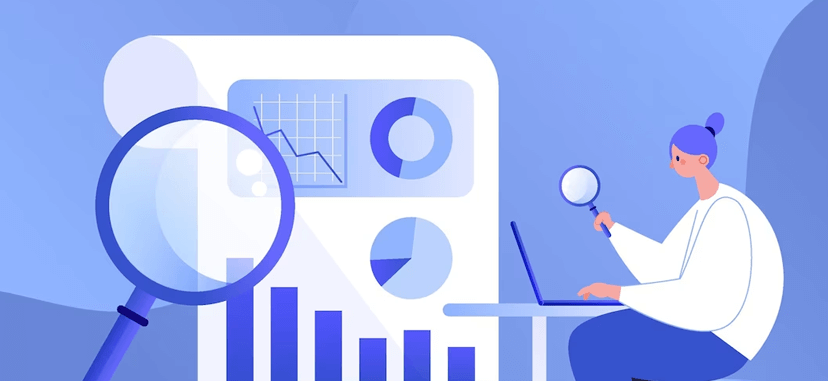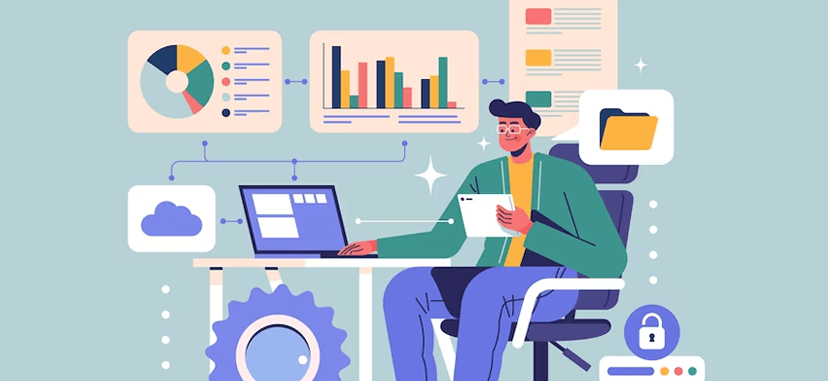
Click the button to start reading
The Beginners Guide to Needs Analysis: Methods and Examples
Imagine you’re preparing for the launch of a new restaurant venture.
The location is prime, the interior is stylish, and there’s palpable excitement in the air amongst the staff. But on opening day, only a handful of patrons stroll in.
Why?
You’ve stocked up on the finest sushi ingredients in a neighborhood that’s yearning for authentic Italian. This mismatch underscores the essence of why a needs analysis is vital.
In much the same way as understanding your potential clientele’s culinary desires, a needs analysis dives deep into what is genuinely required in a given situation.
Needs analysis is about bridging the gap between the current state and the desired state. It’s the art and science of asking, “What’s missing?” and “How can we address it?”.
Whether you’re launching a product, starting a community initiative, or even deciding on a career move, recognizing and understanding these ‘needs’ is the foundation upon which successful strategies are built.
In this article, we’ll delve into what needs analysis is, why it’s an important function early on in a project, and how to conduct one effectively. Let’s get started!

What is Needs Analysis in Project Management?
Needs analysis in project management is about understanding and specifying precisely what a project requires to succeed.
It’s an exploration of the disparities between the existing conditions and the desired state in a particular project. Identifying these gaps means project managers can draft a clear roadmap on how best to achieve their goals.
The needs analysis process was created by Roger Kaufmen – also known as the needs assessment.
Historically, the concept of needs analysis was initially more prevalent in fields like education. Instructors and curriculum developers would evaluate the requirements of learners to ensure their educational experiences were tailored to their unique needs.
Over time, as industries and their associated projects grew in complexity, the necessity of identifying specific needs before embarking on projects became crystal clear.
Project managers adopted the methodology, refining it further to fit the unique contours of intricate business endeavors.
Needs analysis has adapted to the increasing complexity of contemporary projects. What began as a relatively straightforward process of identifying basic requirements has expanded to consider a vast array of factors, from technological needs and stakeholder expectations to regulatory compliance and potential future changes.

The Methods Behind Needs Analysis
Just as a project’s requirements can vary immensely based on its nature and context, the methods employed to decipher those needs are equally diverse.
Let’s explore some of the common methods and understand their individual merits.
Surveys and Questionnaires
Surveys and questionnaires are conversations, albeit in a structured format. And just like any good conversation, they shine a light on perspectives, concerns, and aspirations.
The beauty of surveys lies in their quantitative nature. Think of it as taking the temperature of a large group.
With structured questions, often scaled or multiple-choice in nature, project managers can easily aggregate and analyze the data. This gives a clear pulse on prevalent needs or preferences, helping in making informed decisions.
Needs Analysis Questions for Surveys:
- What are the top three needs or requirements not being met currently?
- Are there any tools or resources you feel the project lacks which would be beneficial?
- How often do you feel the need for more training or upskilling? (Never / Rarely / Monthly / Weekly)
However, the effectiveness of surveys is greatly amplified when used with clarity of purpose. It’s essential to have a precise understanding of what you’re seeking. Are you after general feedback or exploring a specific issue?
Your survey’s structure and questions will pivot based on this.
Interviews
While surveys might give you numbers and general trends, interviews grant project managers a peek into the unique experiences, feelings, and perceptions of stakeholders. It’s this qualitative richness that makes interviews invaluable.
Interviews allow for dynamic and responsive interactions.
A skilled interviewer can read between the lines, notice non-verbal cues, and pivot questions based on the interviewee’s responses. This flexibility can unearth concerns, suggestions, or viewpoints that a respondent might not think to express in a survey.
Needs Analysis Questions for Interviews:
- Describe a situation where a tool or resource would have significantly changed the outcome of a project phase.
- Tell me about a time when a lack of training or understanding posed a major challenge.
- How do you see our project or product evolving in the next year, based on your current needs?
Post-interview, collate and analyze the data. Patterns will emerge, highlighting common needs, concerns, or suggestions. This information is gold for project managers, offering actionable insights that can directly shape the direction of a project.
Focus Groups
Focus groups bring together a diverse set of individuals together in a single room. You get a melting pot of ideas, experiences, and concerns, all bubbling to the surface in real-time.
Participants not only share their thoughts but also respond to others. This interactivity can spark new insights, leading to a richer understanding of needs.
Focus groups need to following to be a success:
- Selection of Participants: Diversity is king. Including representatives from different departments, roles, or user groups ensures a comprehensive discussion.
- Moderation: A skilled moderator keeps the conversation on track, ensures everyone has a voice, and can probe deeper into comments to extract maximum value.
- Clear Objectives: Before the session, be clear about what you hope to achieve. Is it brainstorming solutions? Understanding user feedback? Pinpointing project challenges? A defined goal guides the discussion.
Once your focus group wraps up, the real work begins. Transcribe, categorize, and analyze the insights. Look for patterns and recurring themes. These collective insights, when combined with other needs analysis methods, offer a robust foundation for project decisions and direction.
Observational Analysis
Observational analysis thrives on the principle that seeing is truly understanding.
Unlike methods such as surveys or interviews that rely on an individual’s recollections or perceptions, observational analysis captures the intricacies of actions, reactions, and interactions firsthand.
Observational analysis is particularly potent when examining operational processes. By watching how teams manage their tasks, interact with tools, or collaborate with each other, a project manager can identify bottlenecks, redundancies, or even areas ripe for automation.
Several techniques stand out:
- Shadowing: Involves following an individual or team closely, absorbing and documenting their activities throughout their workday. It’s immersive, granting a detailed look into daily routines.
- Workplace tours: Allow managers to walk through physical or even virtual workspaces. Such tours give a panoramic view of the environment, the tools in use, any diagrams, or systems that guide workflow.
- Video analysis: Beneficial for digital interfaces, permits session recordings. This allows for multiple reviews, capturing nuances that might be missed in real-time observations.
A neutral observer is best placed to refrain from judgments or interference during the observational process. Concurrently, note-taking becomes the backbone of this method.
Documenting patterns, anomalies, or areas that spark questions ensures that observations translate into actionable insights.
Each of these methods carries its own set of strengths. While surveys might be excellent for gauging general sentiments, observational analysis could be the key when refining user-centric designs.

How To Implement the Needs Analysis Steps
Each phase of needs analysis serves a distinct purpose and, collectively, they form the backbone of informed decision-making in project management.
Let’s break down the process of needs analysis so you’re best placed to implement the necessary steps:
- Preparation: The foundation of an effective needs analysis process begins with a clear understanding of the objectives. What do you hope to achieve? What’s the scope? Defining these upfront aligns the entire process towards a clear direction.
- Data Collection: Whether it’s through interviews, surveys, focus groups, or observational analysis, gathering data is vital. This raw data provides insights into the current state of affairs, revealing gaps, inefficiencies, and areas of improvement.
- Data Analysis: After collection, the raw data is evaluated and analyzed. Patterns emerge, specific needs are identified, and potential solutions begin to take shape. Using statistical tools or qualitative methods, this step transforms data into actionable insights.
- Prioritization: Not all needs have the same urgency or importance. This step involves ranking the identified needs based on factors like urgency, impact, and feasibility. It ensures that critical needs are addressed first, optimizing resource allocation.
- Recommendation & Report: Based on the analysis and prioritization, recommendations are made. These might be changes to processes, the introduction of new tools, or even team realignments. Typically, a comprehensive report is drafted to summarize findings and proposed actions.
- Feedback Loop: After recommendations are implemented, it’s essential to revisit and evaluate their effectiveness. Did the proposed changes address the needs as intended? If not, what adjustments are necessary? Establishing a feedback loop ensures continuous improvement and refinement.
Although the steps seem linear, they are deeply interconnected. Data collection might lead back to a refinement in objectives, or the feedback loop might necessitate a reevaluation of the data.
Skipping or overlooking any of these steps can lead to incomplete insights or misaligned solutions. Thus, for those aiming for success in their projects, understanding and committing to each phase of the needs analysis process is paramount.

Needs Analysis Examples
The beauty of needs analysis lies in its adaptability. While the underlying principle remains consistent, the ways it’s employed can vary widely depending on the context.
Let’s explore a few examples to see how needs analysis can play out in different scenarios.
Educational Institution
A popular university notices a drop in its student retention rate. To address this, the university conducts a needs analysis. They send out surveys to students asking about their experiences, challenges, and reasons for considering a change.
Additionally, focus groups are organized with teaching staff and a few dropout students to gain deeper insights. Through this analysis, it’s discovered that the primary need is a more engaging curriculum and better mental health support for students.
As a result, the university revises its syllabus and sets up a dedicated counseling center.
Retail Business
A chain of clothing stores realizes that, despite steady footfall, sales have been declining. They decide to perform observational analysis, discreetly watching how customers move within the store, what they touch, where they linger, and what seems to put them off.
They find that many customers struggle to locate sizes and styles they want. They then conduct short in-person interviews with shoppers to understand this better. The main need identified is clearer in-store categorization and better-trained floor staff to guide shoppers.
Tech Start-Up
A newly-founded tech company, after launching its beta product, wants feedback for improvements. They set up focus group sessions with select users. These discussions highlight some non-intuitive features in the software.
Surveys are also sent to a broader user base reiterating these findings, pointing to a need for a more user-friendly interface. Acting on this, the start-up revamps its design for greater ease of use.
Healthcare Facility
A clinic sees a steady decline in patient appointments. To identify the root cause, they employ a combination of methods: surveys sent to patients, interviews with staff, and even observations of patient-staff interactions.
The analysis shows that extended waiting times and limited appointment slots are primary concerns. The clinic then restructures its scheduling system, addressing the identified needs.
Each of these examples demonstrates the versatility of needs analysis. By combining methods, asking the right questions, and critically evaluating responses, organizations and institutions can hone in on their primary needs and act strategically to address them.

Benefits of a Comprehensive Needs Analysis
Rooted in its systematic approach, a thorough needs analysis can be the guiding star of a project, ensuring that resources, time, and effort are directed appropriately.
For businesses or projects looking to carve a niche for themselves in a hyper-competitive market, the competitive advantage a needs analysis can offer is undeniable.
When a business truly understands the needs of its stakeholders, be they customers, employees, or partners, it can tailor its offerings or solutions with pinpoint accuracy. Such precision can be the difference between a project that struggles and one that thrives.
Yet, some bypass this crucial step. Perhaps it’s the allure of quick results, the temptation to rely on assumptions, or simply the oversight due to myriad other pressing concerns.
Overlooking needs analysis is a misstep. While the initial process might seem time-consuming, the dividends it pays in terms of project clarity, stakeholder satisfaction, and overall efficiency are well worth the investment.

Can Needs Analysis Solve Every Problem?
Needs analysis is undoubtedly a powerful tool in the project management toolkit. By thoroughly assessing the gap between the current state and the desired state, organizations can map out a clear path to bridge that divide.
However, does that mean it’s a silver bullet for every conceivable challenge?
Well, here are the five factors that affect the answer.
- Depth of Understanding: The efficacy of needs analysis is largely dependent on how comprehensively and thoughtfully it’s conducted. A shallow or rushed needs analysis might gloss over deeper, systemic issues, leading to misdiagnosed problems and misguided solutions.
- Fluidity of Needs: Needs aren’t always static. Especially in rapidly evolving industries or contexts, what’s deemed a pressing need today might become obsolete or evolve tomorrow. Relying solely on a needs analysis from a year ago without reassessing the current landscape can lead to outdated strategies.
- Human Element: Needs analysis, while systematic, is inherently tied to human perceptions, beliefs, and biases. There might be instances where stakeholders, despite their best intentions, are unaware of their true needs or can’t articulate them effectively.
- External Factors: Not all challenges faced by a project or organization can be traced back to internal needs. External factors, such as market dynamics, regulatory changes, or global events, can exert pressures that a needs analysis might not be equipped to identify or address.
- Solution Creation: Identifying needs is just one side of the coin. The real challenge often lies in crafting effective solutions to address these needs. While needs analysis can illuminate what’s missing or desired, the creative and strategic process of addressing these gaps is a different beast altogether.
A holistic approach, one that combines needs analysis with ongoing market research, feedback mechanisms, and adaptive strategy formulation, is key for multifaceted challenges of today’s projects and industries.
Conclusion
Never underestimate the importance of asking the right questions. Before you dive into execution, take a moment to listen, observe, and understand. Your projects will be richer, more impactful, and infinitely more successful when built on the solid foundation of a meticulously conducted needs analysis.
The real value lies not just in identifying what’s missing or what can be improved but in crafting solutions that truly resonate with stakeholders, be it customers, students, or users.
















